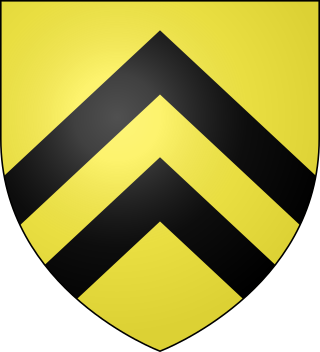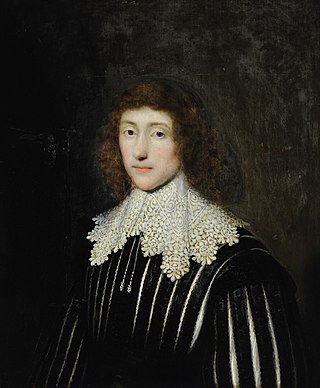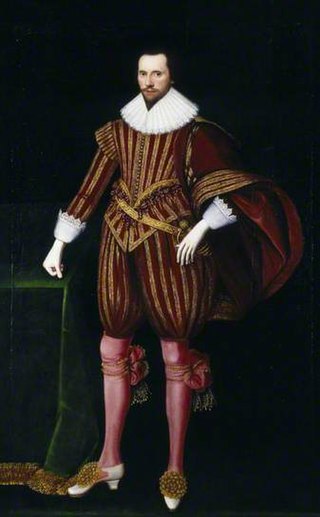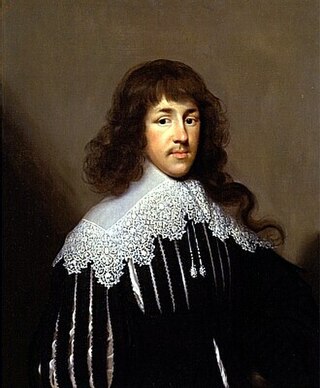John Maclellan, 3rd Lord Kirkcudbright (died 1664) was a Scottish nobleman and royalist.
John Maclellan, 3rd Lord Kirkcudbright (died 1664) was a Scottish nobleman and royalist.
Maclellan, like his father Lord Kirkcudbright (whose titles he inherited in 1647), was an ardent Covenanter; he raised levies for the king which he used in the raid on Whigamore in 1648.
A zealous Royalist, John Maclellan insisted his vassals take up arms in the cause of the King, during the course of which from 1640 the villages of Dunrod and Galtway were much depleted.
Lord Kirkcudbright, along with Major General James Holburn, was appointed as a deputation from the Committee of Estates to meet with Oliver Cromwell at Seaton and accompany him to Edinburgh.
Lord Kirkcudbright's regiment, which had been sent to Ireland, was on 6 December attacked by the English Parliamentary forces, nearly being cut to pieces.
The lands to which this Lord Kirkcudbright succeeded were extensive, but his loyalty in raising and furnishing forces during the English Civil War, for which he, like so many other royalists, received no remuneration, impoverished his estate.

Frederic Thesiger, 1st Baron Chelmsford, PC, FRS was a British jurist and Conservative politician. He was twice Lord High Chancellor of Great Britain.

Earl of Antrim is a title that has been created twice, both times in the Peerage of Ireland and both times for members of the MacDonnell family, originally of Scottish origins.
Robert Maclellan, 1st Lord Kirkcudbright was Provost of Kirkcudbright in 1607 and was best known for his riotous behavior..
Thomas Maclellan, 2nd Lord Kirkcudbright was a Scottish nobleman, nephew of Robert Maclellan, 1st Lord Kirkcudbright and the son of William Maclellan and Rosina Agnew.

Lord Kirkcudbright was a title in the Peerage of Scotland. It was created for Sir Robert Maclellan of Bombie on a 1633 royal visit to Scotland by King Charles I of England. Maclellan had already been created a baronet of Nova Scotia in 1631.

Earl Poulett(pronounced "Paulett") was a title in the Peerage of England. It was created in 1706 for John Poulett, 4th Baron Poulett. The Poulett family descended from Sir Anthony Paulet, son of Sir Amias Paulet, who served as Governor of Jersey and as Captain of the Guard to Queen Elizabeth I. The ancestral family seat was Hinton House in the village of Hinton St George, Somerset.
Viscount of Kenmure was a title in the Peerage of Scotland. It was created by Charles I in 1633 for the prominent Presbyterian Sir John Gordon, 2nd Baronet. He was made Lord Lochinvar at the same time, also in the Peerage of Scotland. Both titles were created with remainder to "heirs male whatsoever bearing the arms and name of Gordon"

William Cavendish, 3rd Earl of Devonshire, KB, FRS was an English nobleman and politician, known as a royalist supporter.
Philip Stanhope, 1st Earl of Chesterfield was an English nobleman, aristocrat and royalist, who was created the first Earl of Chesterfield by King Charles I in 1628.

The Clan MacLellan is a Scottish clan of the Scottish Lowlands. The clan does not currently have a chief therefore it is considered an Armigerous clan.

Earl of Carbery, in the County of Cork, was a title in the Peerage of Ireland. It was created on 5 August 1628 for the Welsh courtier and politician John Vaughan, 1st Baron Vaughan. He had already been created Baron Vaughan, of Mullingar in the County of Westmeath, on 13 July 1621, also in the Peerage of Ireland. He was succeeded by his son, Richard, the second Earl. He fought as a Royalist in the English Civil War. On 25 October 1643 Charles I created him Baron Vaughan, of Emlyn in the County of Carmarthen, in the Peerage of England, which entitled him to a seat in the English House of Lords. His eldest son Francis Vaughan, Lord Vaughan sat as Member of Parliament for Carmarthen but predeceased his father. Lord Carbery was therefore succeeded by his second son, John, the third Earl. He notably served as Governor of Jamaica between 1675 and 1678 and as President of the Royal Society between 1686 and 1689. He had no surviving male issue and the titles became extinct on his death in 1713.
Robert Sutton, 1st Baron Lexinton was a Royalist MP in 1625 and 1640.

William Richard George Stanley, 9th Earl of Derby, styled Lord Strange from 1655 to 1672, was an English peer and politician.

Black Morrow, also known as Black Murray and Outlaw Murray, is the name given to a late 15th century Scottish outlaw. A popular ballad makes the bandit as living in Ettrick Forest, while a recorded oral tradition, a wood in Kirkcudbrightshire. In the tradition, the outlaw is described as a Romani or Scottish Traveller, Moor, a Saracen or, more commonly, an Irishman or from Ireland. The folklorist David MacRitchie took a strong interest in the ethnicity of the outlaw because of his dark skin, and the story is commonly quoted in modern Afrocentrist literature. Others however have disputed whether the bandit was dark skinned, or a "Blackimore".
Francis Leigh, 1st Earl of Chichester was a Royalist politician and courtier around the period of the English Civil War.

William Henry Lyttelton, 1st Baron Lyttelton MP was a British politician and colonial administrator from the Lyttelton family. He was the youngest son of Sir Thomas Lyttelton, 4th Baronet.

Francis Seymour, 1st Baron Seymour of Trowbridge, of Marlborough Castle and Savernake Park in Wiltshire, was an English politician who sat in the House of Commons at various times between 1621 and 1641 when he was raised to the peerage as Baron Seymour of Trowbridge. He supported the Royalist cause during the English Civil War.
Lawrence Harman Parsons, 1st Earl of Rosse, known as The Lord Oxmantown between 1792 and 1795 and as The Viscount Oxmantown between 1795 and 1806, was an Anglo-Irish peer and politician.

Sir Francis Godolphin MP, of Godolphin in Cornwall, was an English nobleman, landowner, politician, and Member of Parliament. His chief claim to fame is that he was the dedicatee of Hobbes' Leviathan.
Sir William Godolphin, 1st Baronet, of Godolphin in Cornwall, was an English land owner, politician, and Member of Parliament. He was the eldest son of Sir Francis Godolphin, KB, who had been a Member of Parliament until being barred from sitting because of his Royalist sympathies during the Civil War, and who after the Restoration was knighted in reward for his loyalty. Probably also in token of Sir Francis's services, William was created a baronet on 29 April 1661.
Rayment, Leigh. "Leigh Rayment's Peerage Page – Peerages beginning with "K" (Page 2)". Archived from the original on 27 October 2019.{{cite web}}: CS1 maint: unfit URL (link)[ self-published source ][ better source needed ]